In 1978 a six month, 5,000km tour of Sri Lanka and India. Inspired by Louis Malle’s groundbreaking six-hour documentary, Phantom India. Noel and Danny started searching for it. We started in Colombo and followed the coast around to Hambantota. Then up the east coast to Trinco. The east coast had just been hit by a typhoon and coconut palms were on the ground like match sticks. There were no bridges north of Batticaloa and we used canoes 13 times. From Trinco to Anuradhapura then north through Elephant Pass to Jaffna. The peninsular was later closed for decades so it was special to be touring there. Then down to Talaimannar to get the boat over the Palk Strait to India.
Sri Lanka was to be our preparation for India but from day one we were blown away by the difference coming from a mainly Buddhist society to a Hindu/Muslim and poorer one. We had no particular plan and made it as we went. Firstly we rode across Tamil Nadu and Kerala to Cochin on the Malabar coast. Then up inland to the Ooty hill station and back through Salem and Erode to the east coast and Pondicherry which where there was an alternative commune. Then up to Madras as it was called, staying at Broadlands in Triplicane.
Summer had arrived. Dan got the train to Bombay and I rode up to Hyderabad myself. A few weeks later we found each other in Hyderabad by leaving messages at the Poste Restante. It was unspeakably hot. We got the train up to Nagpur to reassess. It was still too hot so we got the train to Delhi. From there we started riding again, across the plains to Chandigarh. Now the mountains began, and we first got to Shimla. From there we went on to the Kulu Valley reaching Manali. As we rode up that valley there were people lining the road cheering us on, possibly as the first cycle tourers to arrive in the region.
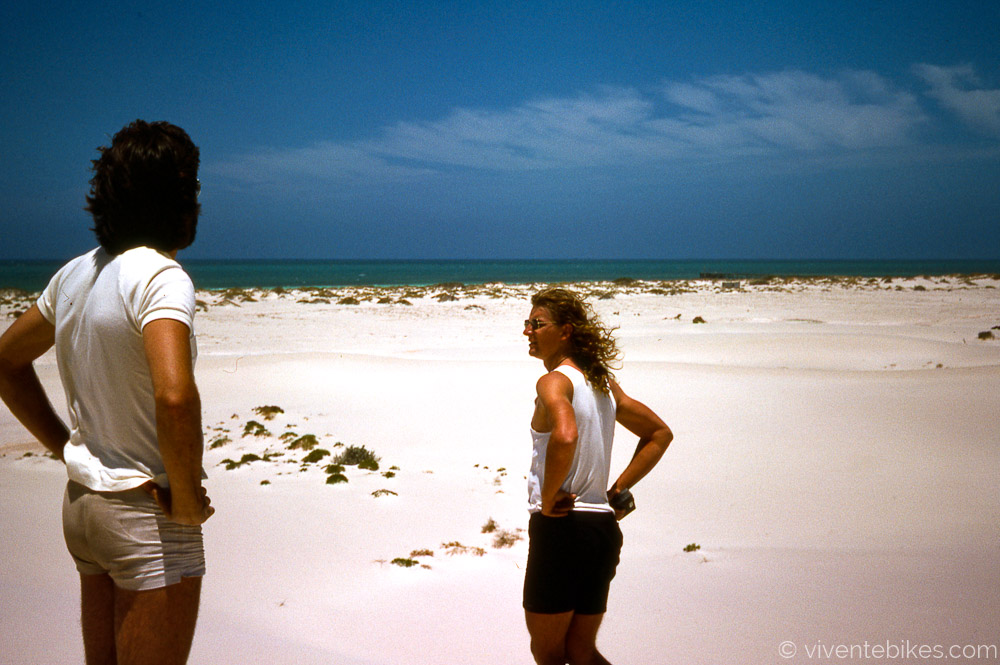
The journey started with us driving across Australia to Perth. The flight was Perth-Negombo. This shot was at the Eucla sand dunes.
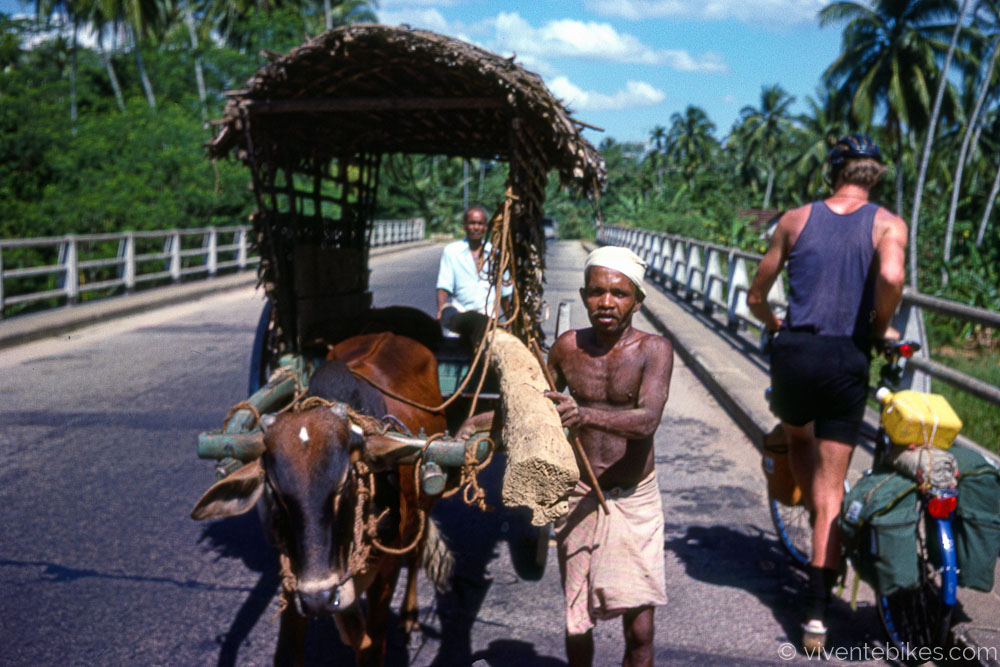
Off we go. Notice the gallon water container on the back. We were boiling all of our water and eventually carrying two gallons each (9l).
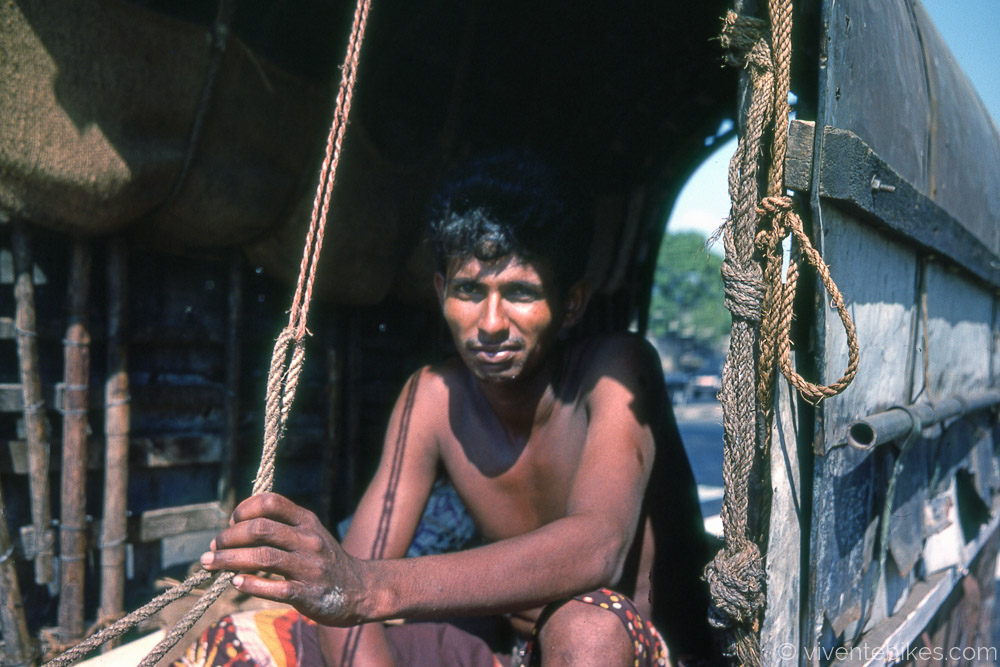
It is a very steady pace of life on the road.
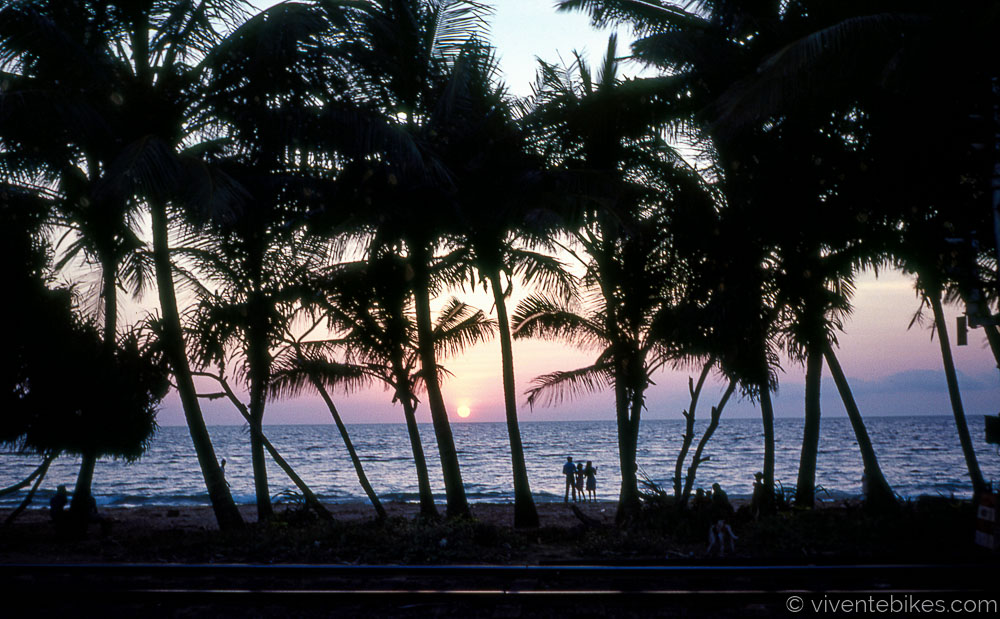
The Sri Lankan coast is picturesque.
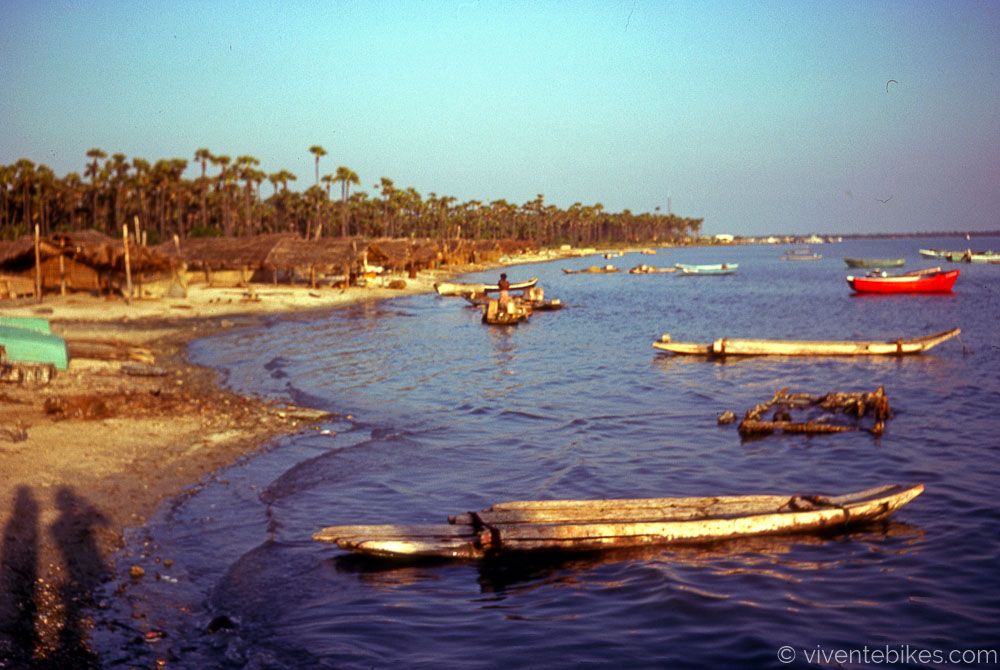
Another fishing village. Everything depends on coconut. The huts are thatched with the fronds. The structures are all in the timber. The rope is coir from the husk. Cooking oil is coconut. Pittu (coconut and rice) is a main dish.
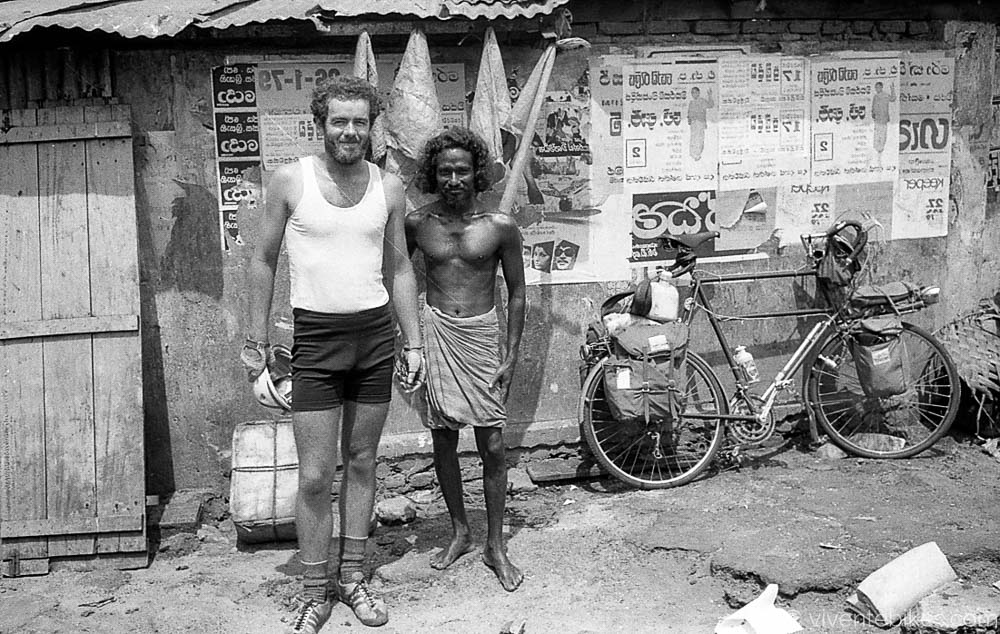
Danny with a fisherman.
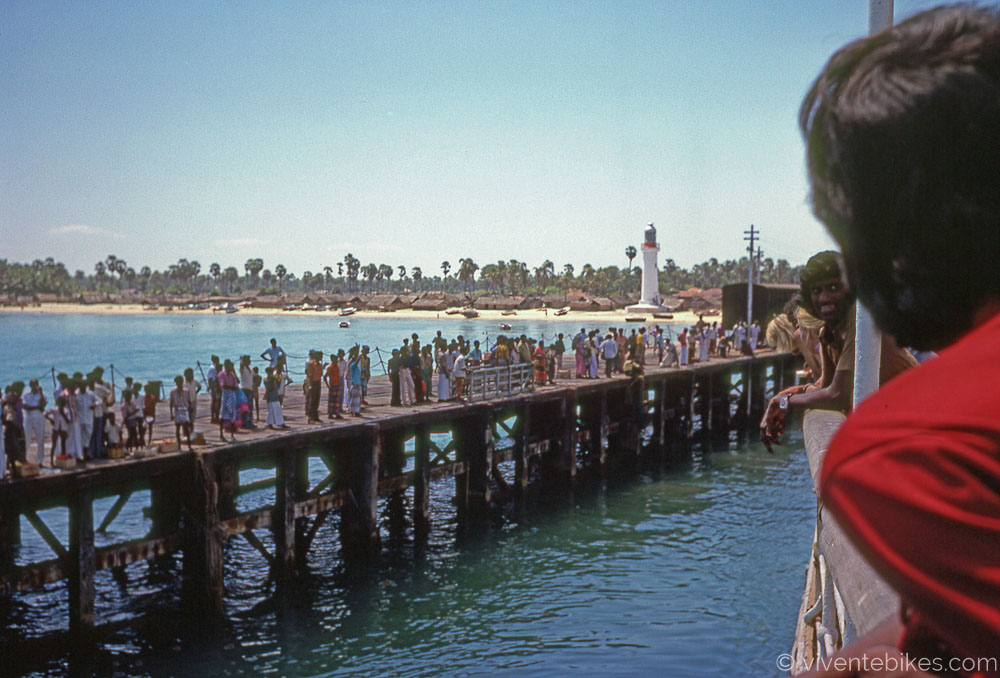
The wharf at Talaimannar taken from the boat. The bikes were hauled up the side of the boat with ropes.
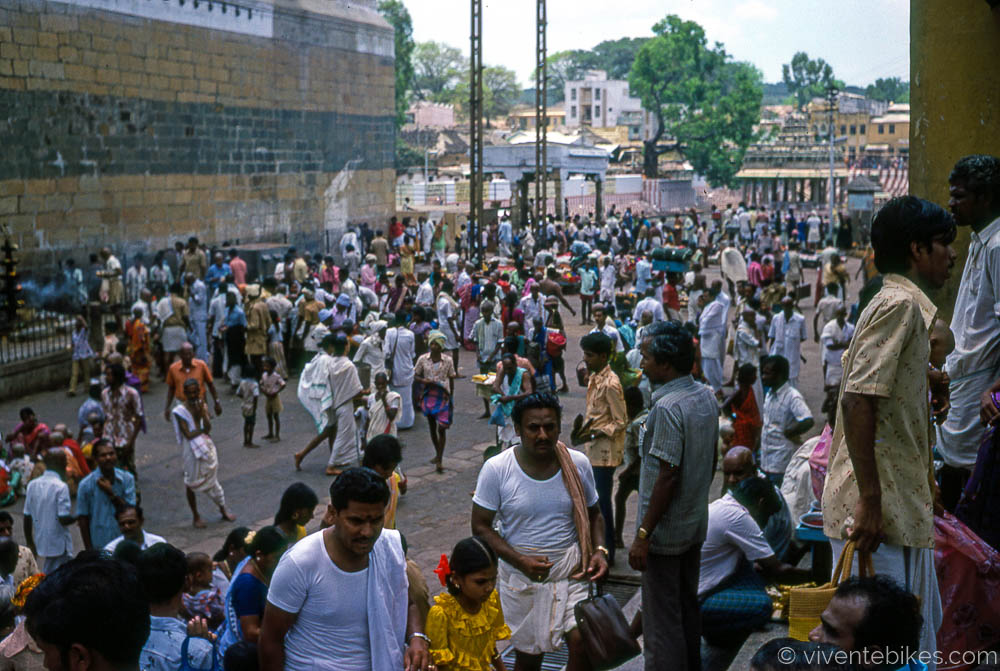
We were bowled over by the intensity of India. We developed the term “India Shock” to describe what the initial immersion into India is like. As months went by we came to feel at home here. I cried when I eventually left, five months later on another boat (Madras to Singapore).
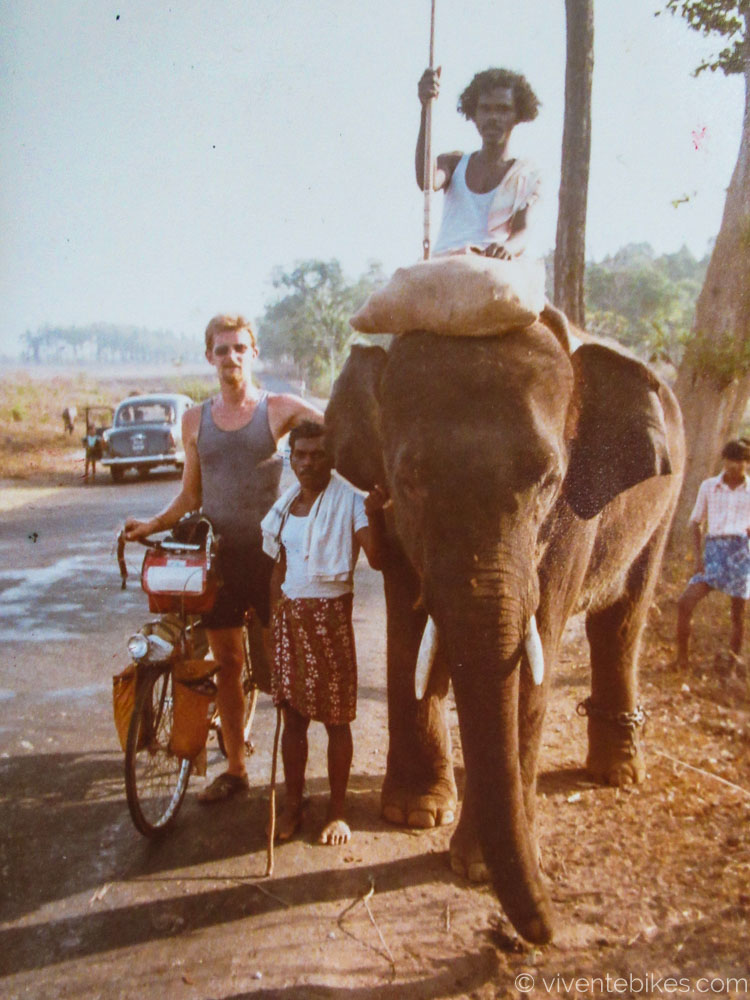
Along the road. Many of the roads were very rough and at one point I broke my steel seatpost just from the constant hammering.
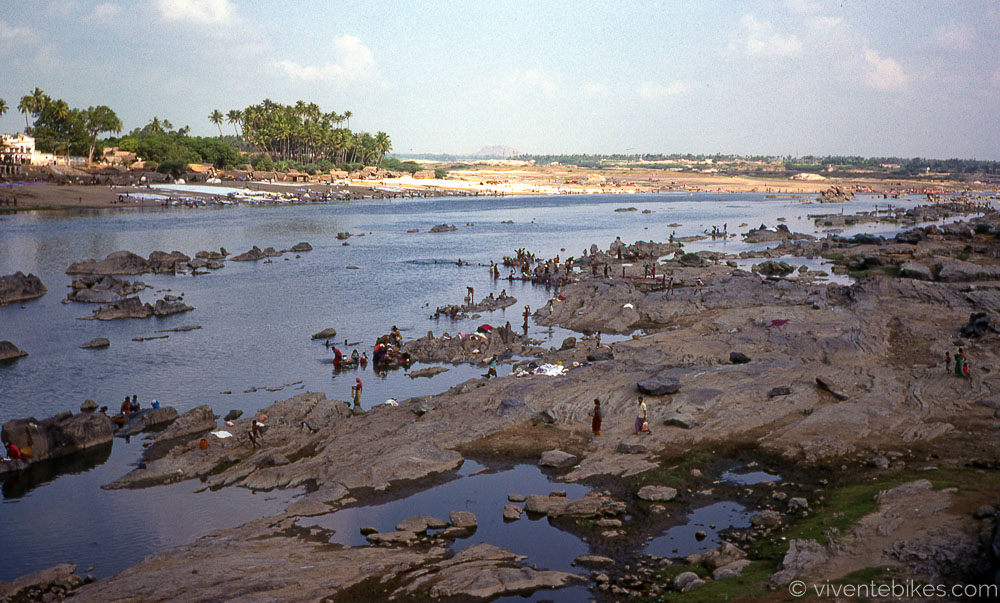
The mighty Kaveri. In the dry season the big rivers virtually stop running. The women and kids are there doing the washing.
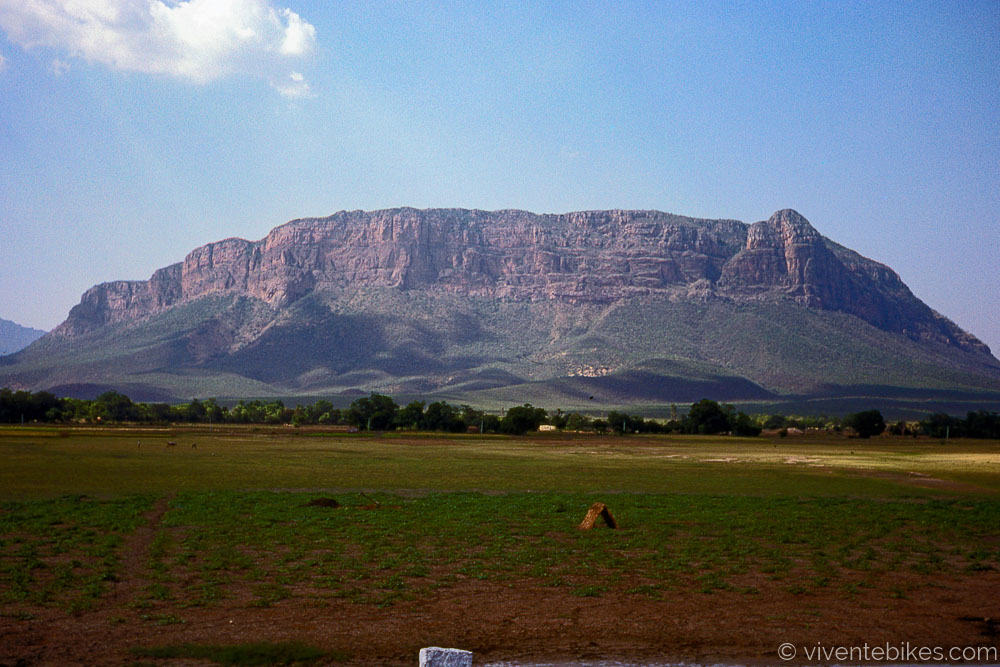
We are arriving at the western ghats. The Indians call them hills but the passes are mostly between 1,500 and 2,000m.
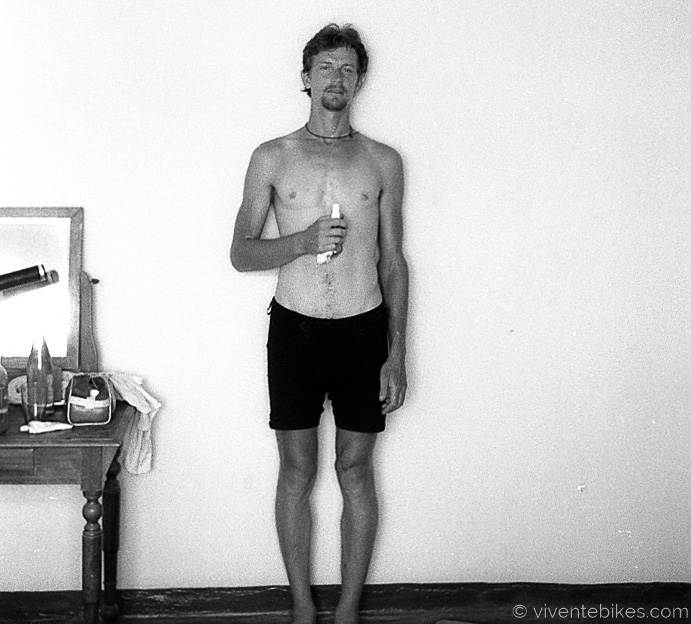
Noel at 26 years of age.
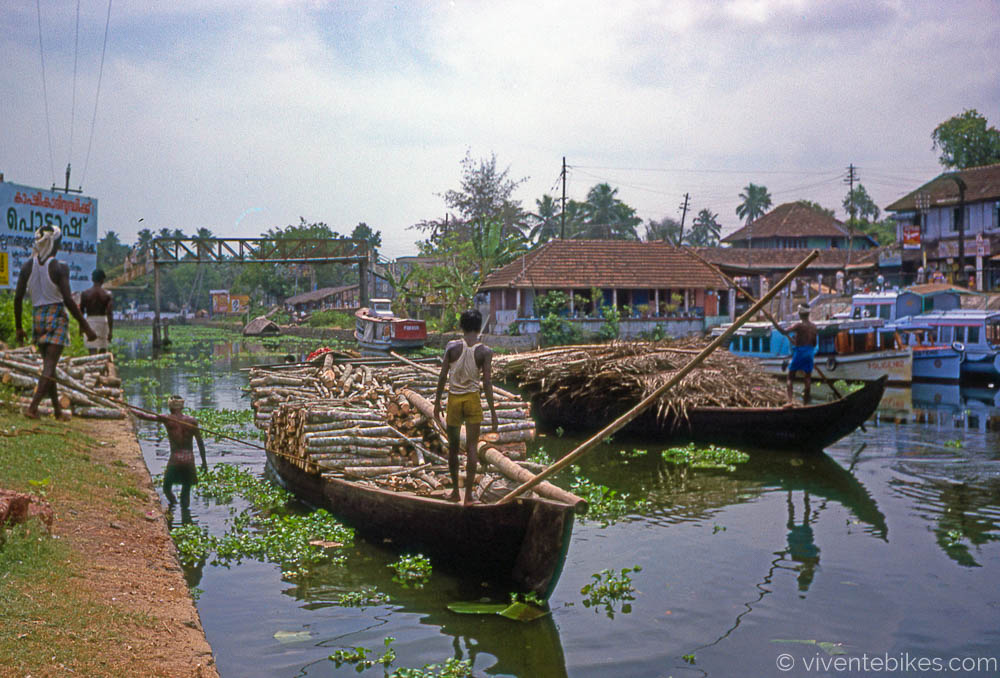
The canals around Alleppey (later renamed Alappuzha) in Kerala.
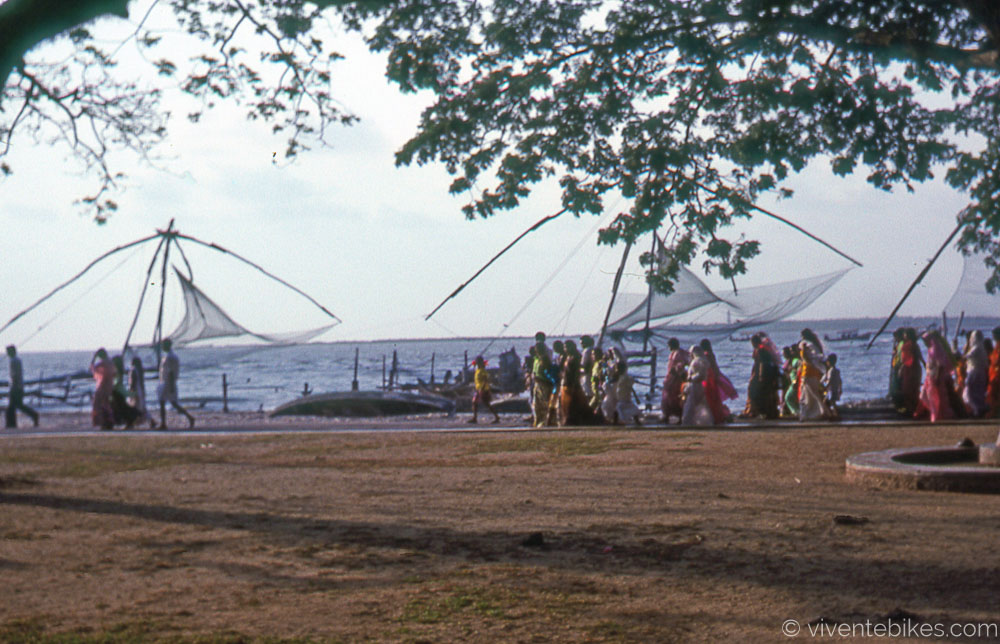
In Old Cochin these fishing nets are lowered into the water and when fish are seen to swim across them the nets are quickly raised up.
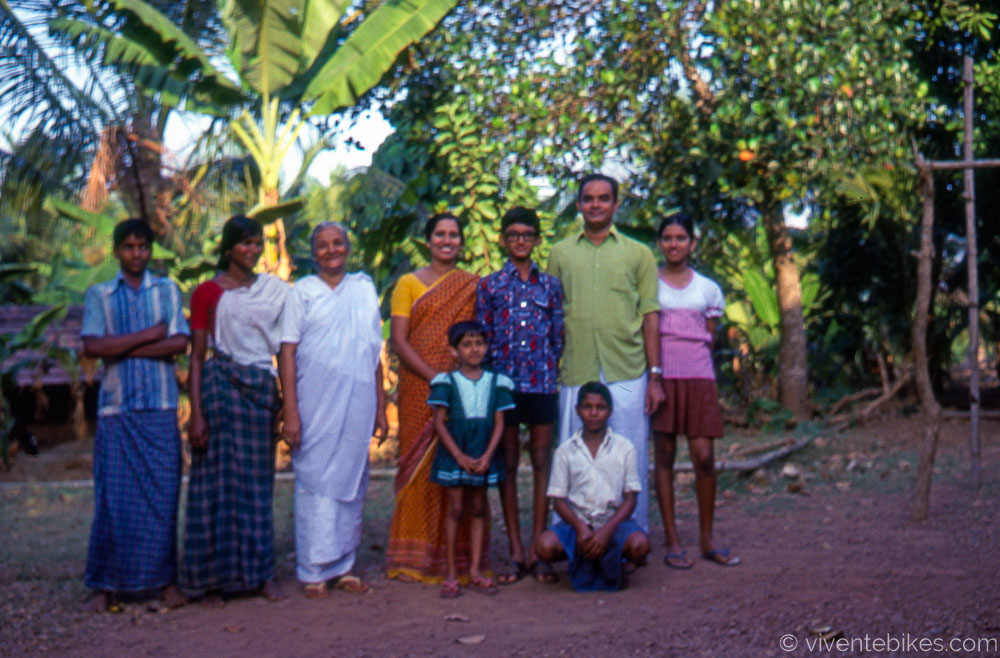
In the Keralan town of Nilambur we are taken in by this family. They were so kind.
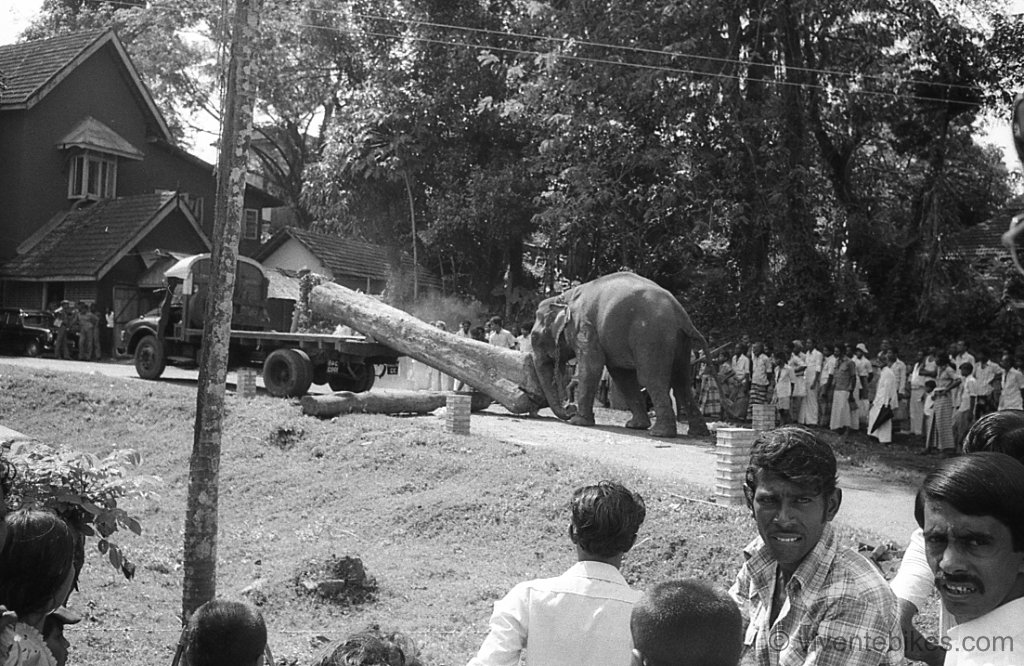
Elephants are in widespread use on the west coast, especially to handle the very heavy teak logs.
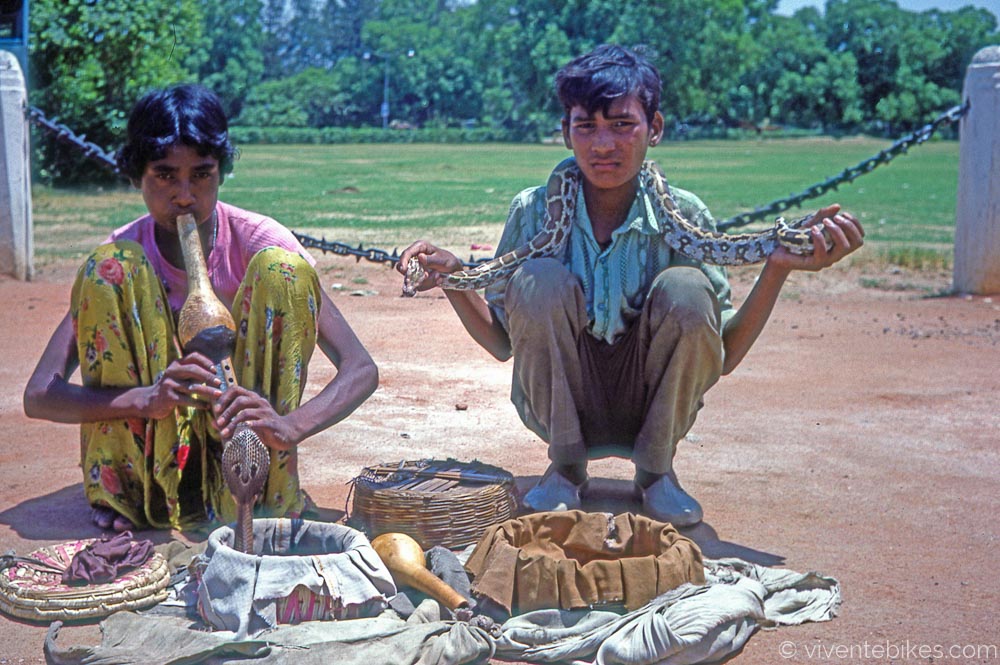
OK for the brave. Cobras are quite common but of course are deaf so playing the pipe is just for atmosphere.
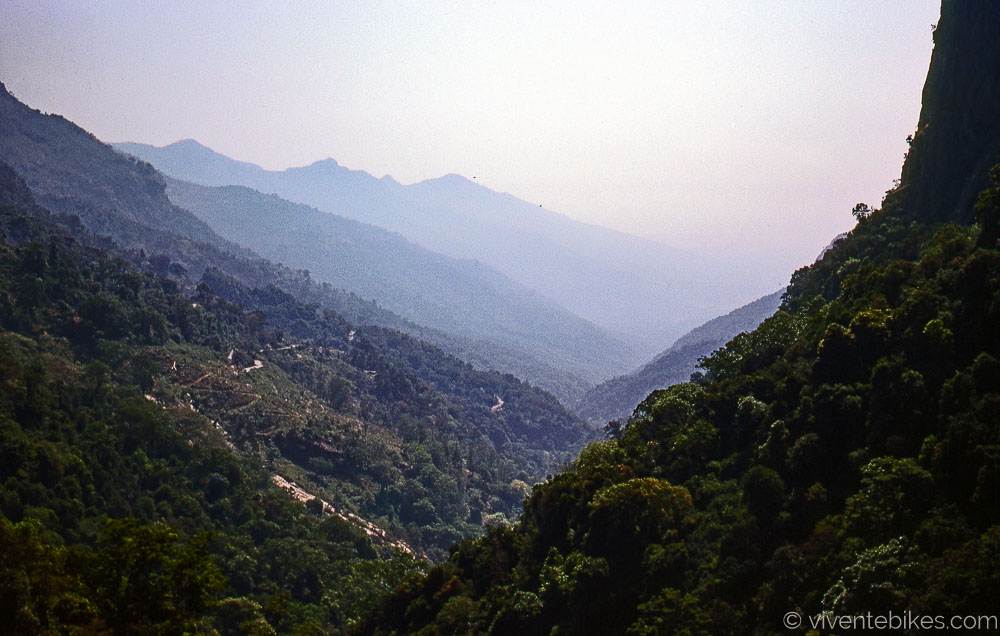
Climbing the ghat road up to Ooty.
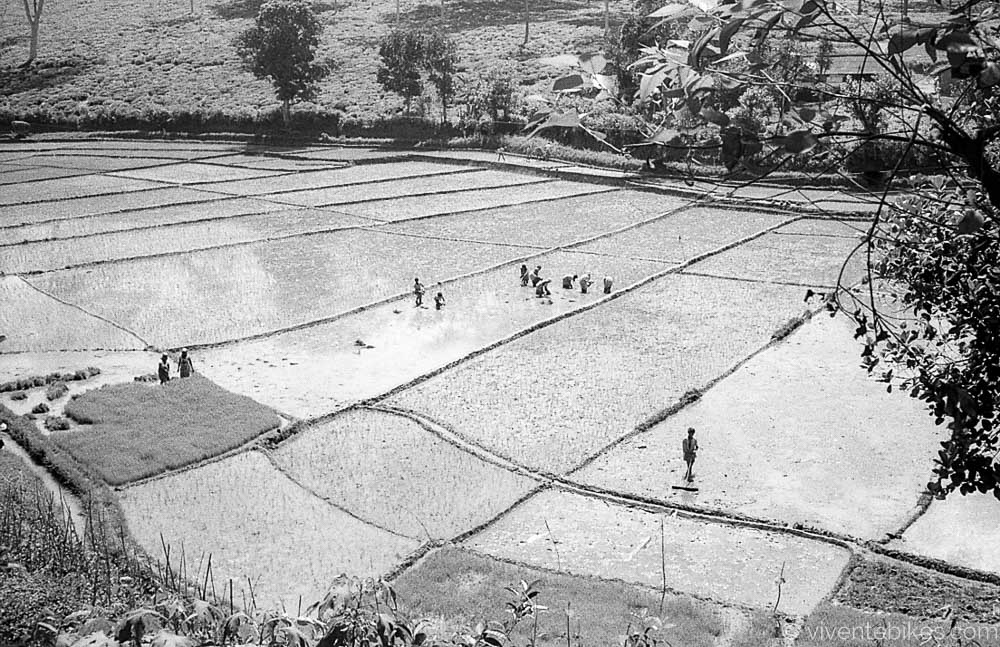
Coming down and heading east it is classic India.
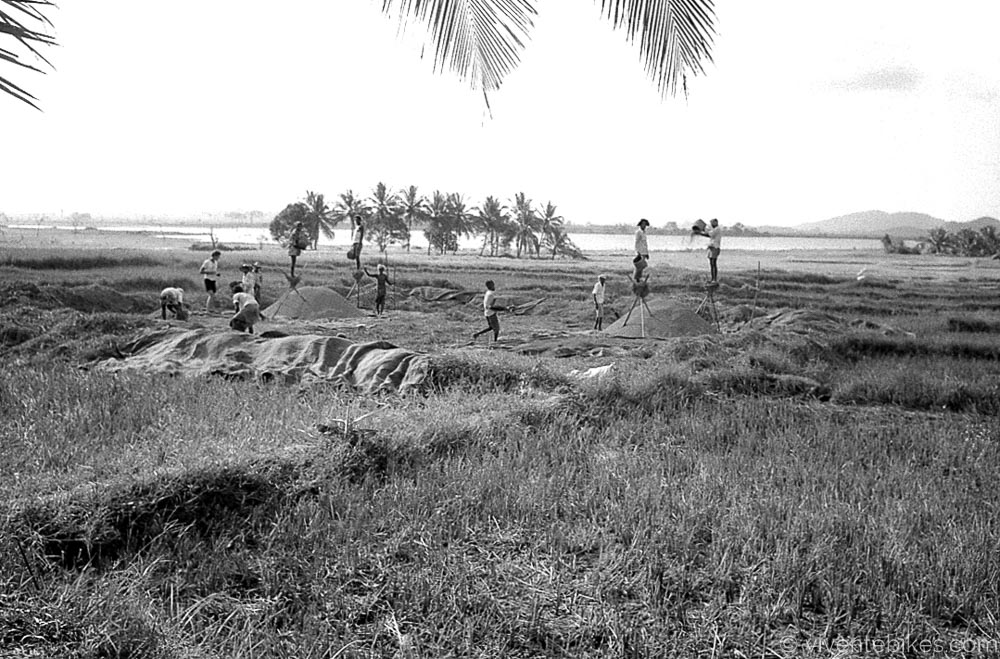
As we ride across the Deccan the pastoral scenes are beautiful. Here the rice is being winnowed. When there is a breeze, they climb up on stands and slowly tip out the grain so that the husks and straw are blown aside.
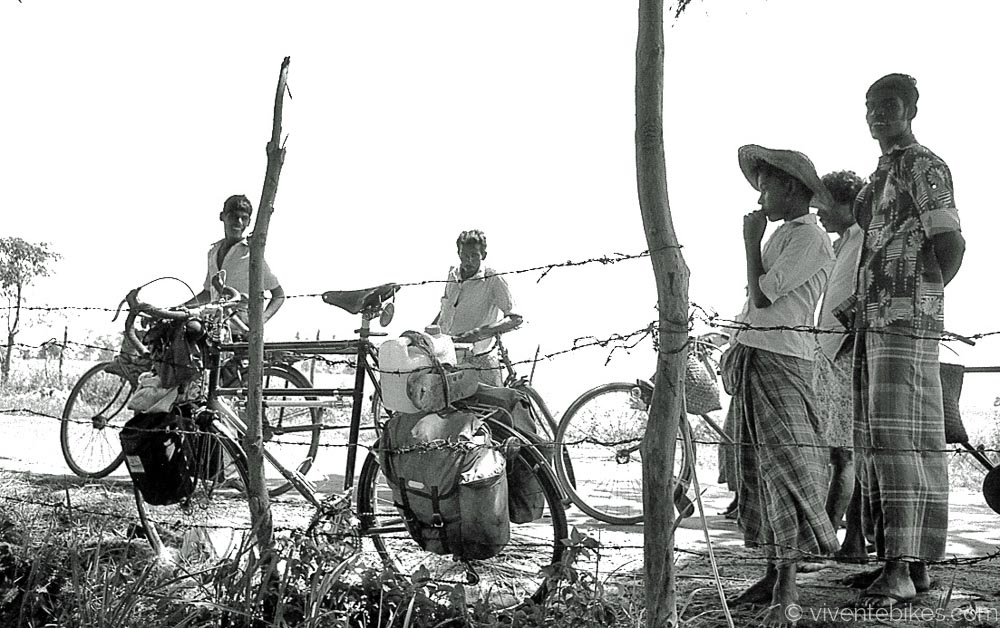
There is always a sense of commonality when you are touring in countries where people walk and cycle. We are in it together.
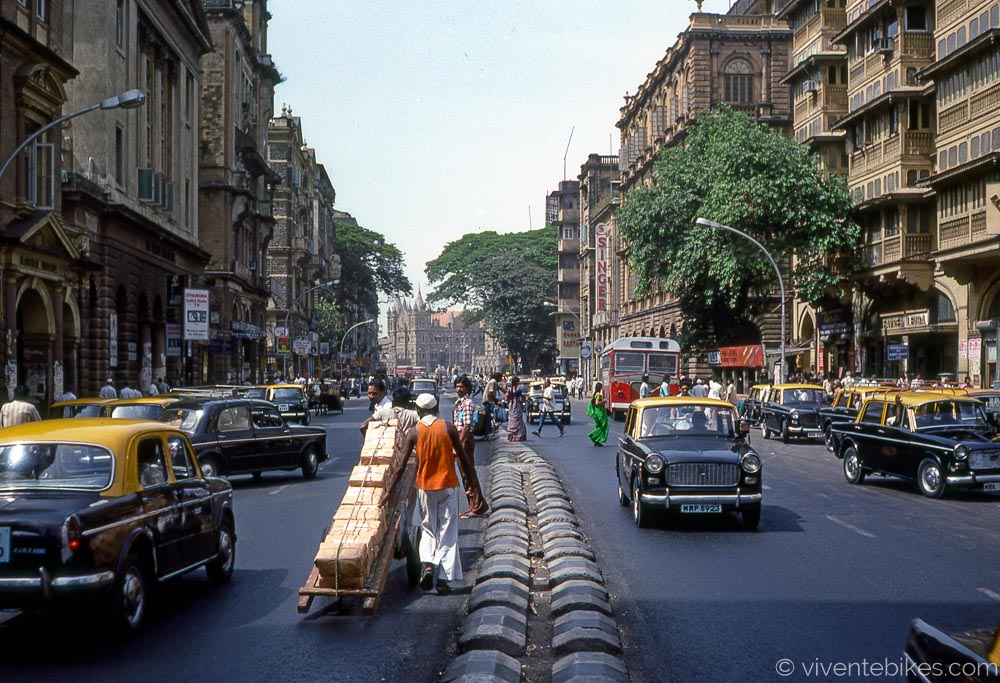
In the big smoke! This is central Madras. Notice that the cars (mostly they are taxis) are all Ambassadors. India had bought an old car factory from England and almost every car in the country was an Ambassador.
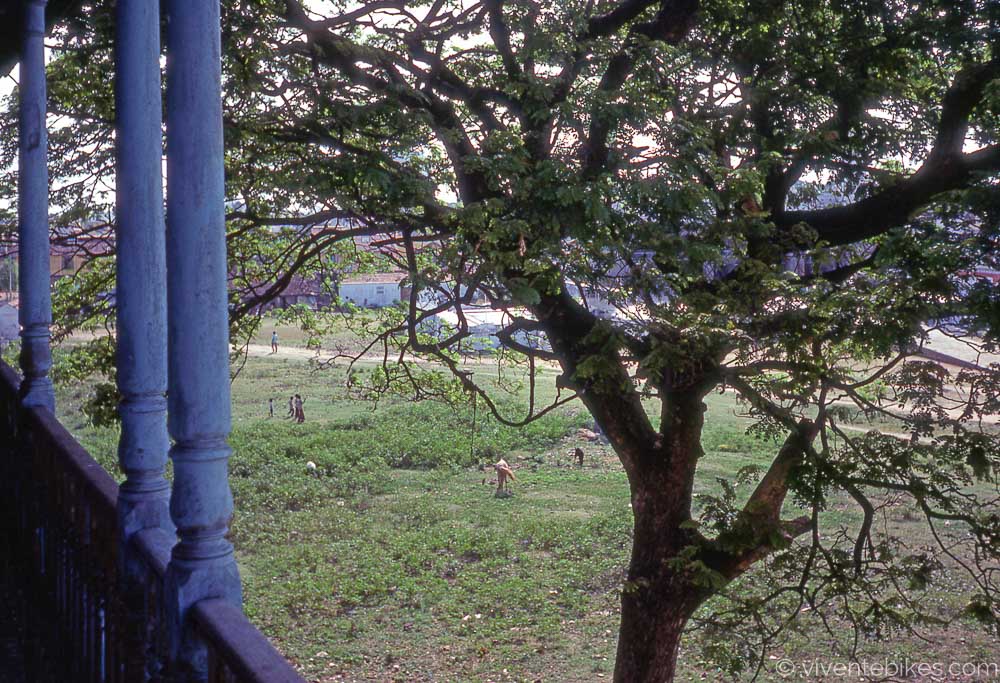
Looking out from the verandah at Broadlands Lodge. We hired two rooms (one just for the bikes) and stayed a week. Broadlands at the time was an institution for hippy travellers in South India. In former times it had been a harem connected to the mosque behind there.
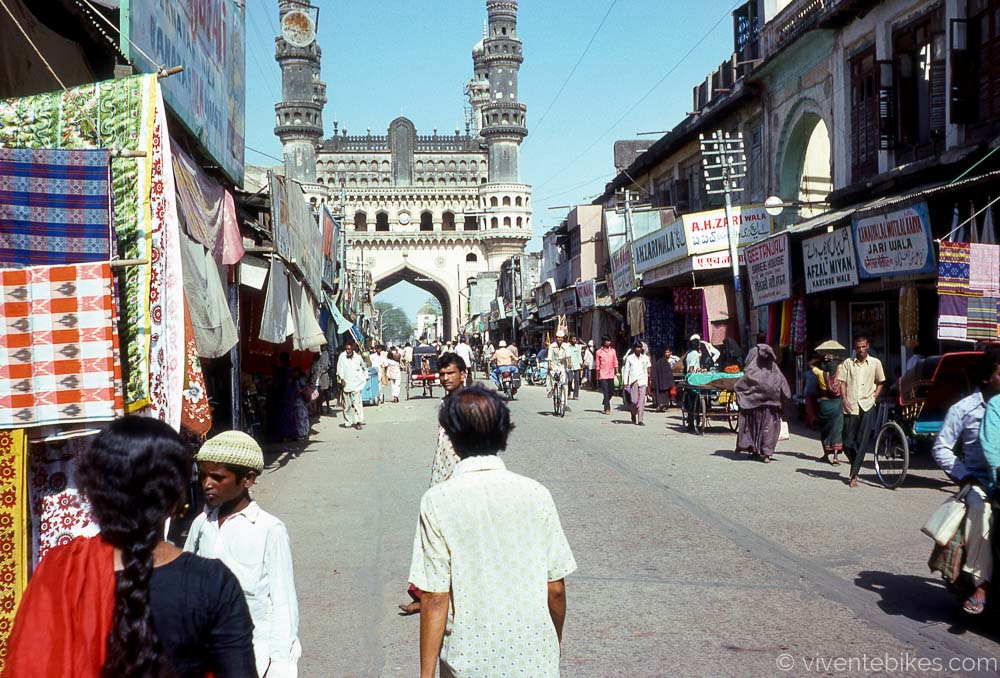
Charminar in Hyderabad. The ride from Madras to Hyderabad was tough because of the heat. I would start at 4am. Riding trough towns there were lines of people sleeping on both sides of the street. No one would sleep inside as it was just too hot. I would hire a room and leave the bike inside and sleep on the footpath. Every 10km or so I’d stop at a well and dump a bucket of water on my head. It would be 40 degrees by 9am. This is when I learned to only go to India in the winter.
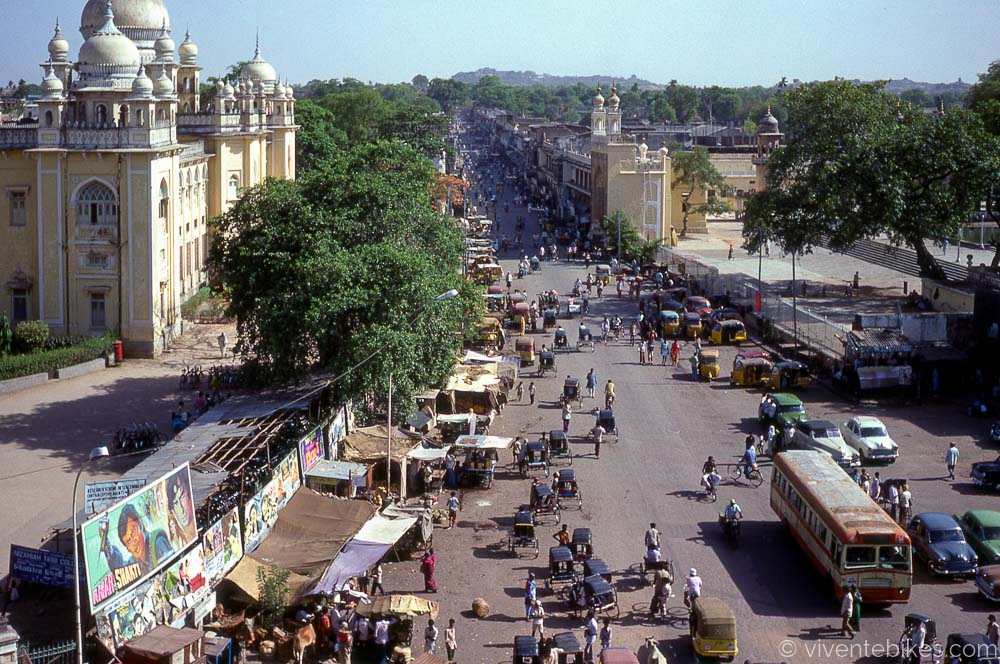
Out the window in Hyderabad. 1978.
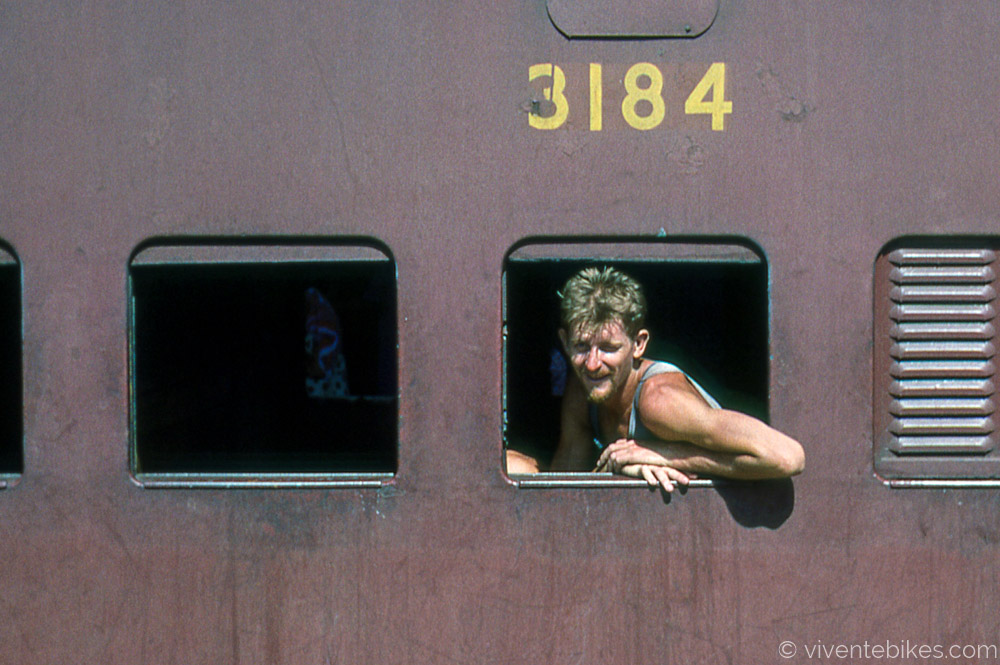
On the train to Nagpur. Here we ran out of film and were unable to get more. We had the whole of North India ahead.